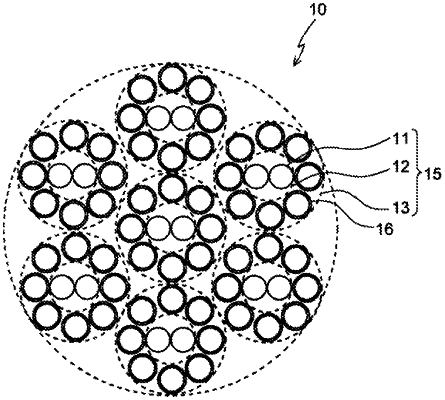| CPC D07B 1/0613 (2013.01) [B65G 15/36 (2013.01); D07B 1/0626 (2013.01); D07B 2201/2023 (2013.01); D07B 2201/2061 (2013.01); D07B 2205/3071 (2013.01); D07B 2205/3089 (2013.01); Y10T 428/12792 (2015.01)] | 20 Claims |

|
1. A metal cord composed of a plurality of metal filaments twisted together,
characterized in that surfaces of the metal filaments constituting an outermost layer are each provided with a zinc plating layer,
wherein degrees of crystal orientation F(002) and F(102) of the (002) plane and the (102) plane of a surface of the zinc plating layer, as represented by the following Formulae (1) and (2), respectively, are less than 120:
F(002)−(R1(002)/R0(002))×100(%) (1)
F(102)−(R1(102)/R0(102))×100(%) (2)
where:
in Formula (1),
R0(002) represents the diffraction peak intensity of the (002) plane of non-oriented zinc, which is 22.1, and R1(002) represents the diffraction peak intensity of the (002) plane of an evaluation sample of zinc; and
in Formula (2),
R0(102) represents the diffraction peak intensity of the (102) plane of non-oriented zinc, which is 8.4, and R1(102) represents the diffraction peak intensity of the (102) plane of the evaluation sample of zinc.
|